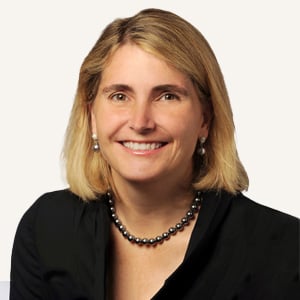2023 was the lowest year in 10 years for U.S. private equity distributions.1 Without the cash from exits, private equity investors are struggling to commit to new private equity funds. Lessons learned from the Global Financial Crisis show that missing vintage years is not the best solution. Therefore, investors are turning to the secondary market in search of liquidity.
In 2023, the overall secondary market had its second largest year on record at $114 billion.2 2023 was also the second largest year on record for LP transactions at $63 billion, coming in slightly below 2021’s record $66 billion.2 While the secondary market continues to exhibit growth, achieving a 16 percent CAGR over the last 10 years, this growth is still constrained by the amount of capital being raised by secondary funds.2 If not for these capital raising limitations, the secondary market might be on its way to transacting on $250 billion of volume in 2024 as investors need liquidity.
Distribution Activity Slowdown in 2023
LPs had a greater need for cash in 2023 as private equity liquidity and distribution activity dramatically slowed down. Sponsor-backed M&A was severely hampered, down 40 percent versus 2022 and 61 percent versus 2021.3 Similarly, global IPO activity significantly dropped off, with volumes down 38 percent versus 2022 and down 83 percent versus 2021.3
LPs continue to desire to allocate to private equity due to its outperformance relative to the public markets and are keen to not miss vintage years. Over a 10-year period, from 2013 to 2023, the Burgiss Global Private Equity Funds Index generated a 12.7 percent annualized rate of return compared to a 7.9 percent annualized rate of return for the MSCI All Country World Investable Market Index over the same time period.4 This in turn, is driving investors to the secondary market to seek liquidity since their existing primary commitments are not yielding cash due to depressed activity in the M&A and IPO markets.
LP Secondary Transactions
Investors flocked to the secondary market in 2023 in search of liquidity. While each investor has a unique portfolio of funds and vintage years, a distinct trend emerged of selling newer vintages with the desire to maximize price. In fact, approximately 38 percent of all funds sold in 2023 were 0-6 years old, and unsurprisingly, the average pricing for buyout funds 0-3 years old and 4-6 years old was 99 percent of Net Asset Value and 93 percent of Net Asset Value, respectively.5 Evidently, investors are seeking to pare back their commitments to recent vintages through secondary sales in order to be best positioned to re-allocate capital in ensuing vintage cycles.
Alongside this emerging trend of selling newer vintages, tail-end secondaries remained a consistent source of liquidity for investors. The secondary market remains tilted towards tail-end funds by count, as they accounted for 41 percent of all funds sold in 2023.5
GP-led Transactions
The GP-led market exhibited more muted growth, compared to the LP market, modestly increasing from $48 billion of volume in 2022 to $51 billion in 2023.2 While some investors may struggle with being asked to make buy or hold decisions on investments, the GP-led market is a win-win-win. It is beneficial for existing LPs, for new LPs, and for GPs. Much like the broader secondary market which has evolved from a state of nascency to one of robust growth and development, the GP-led market has begun to cement itself as a mainstay in the overall market. Investors are embracing the benefits of increased liquidity options and the ability to stay in the best companies for longer.
One key reason for this adoption is the value proposition GP-leds offer by way of portfolio management and AUM growth for sponsors and the potential outsized returns for investors. This is especially true in the middle market, where 61 percent of continuation funds launched by mid-market sponsors (fund sizes up to $2B) were equivalent to 50 percent or more of their latest flagship fund size.3 With respect to outsized returns, we are beginning to see some exits from the first generation of continuation funds. Fifty-six percent of the identified exits have generated a 2.0x+ MOIC, while approximately 25 percent have generated a 2.5x+ MOIC.3
Secondary Fundraising
The secondary market remains both undercapitalized and under resourced. While volume reached $114 billion in 2023, secondaries comparatively make up just a fragment of the overall private equity market which has $13.1 trillion of assets under management.2,6 Looking at dry powder in the secondary market, one can easily see why the larger funds are getting larger and why there is a need for more capital. In 2023, there was only $171 billion of dry powder.3
Fundraising for secondary funds has yet to keep up with LPs desire for liquidity. It remains a limiting factor in the growth of the secondary market. A $250 billion secondary market still remains achievable in the next few years.
Conclusion
Whether it is due to a year of low distributions like 2023 or individual investor needs, the ability to generate liquidity from the private equity market is great for investors. Over the last two decades, the secondary market has evolved from a largely unknown and nascent market providing one-off liquidity to the otherwise illiquid private equity asset class to a robust and constantly evolving market which serves sponsors and investors alike. In particular, it has enabled portfolio management and liquidity generation for LPs. As the private equity industry has continued to expand in terms of fund sizes and new entrants, the secondary market has followed suit. With investors continuing to deploy capital into private equity in search of outperformance relative to public markets, against the backdrop of larger funds being raised and fundraise cycles getting shorter, the need for liquidity remains crucial and ever-present. Thus, in the current macro environment, which is plagued by a challenging financing environment, M&A slowdowns, and contraction of the IPO markets, cash remains queen.
- Pitchbook 2023 Annual US PE Breakdown
- Evercore Private Capital Advisory – FY 2023 Secondary Market Survey Results - Highlights
- Lazard Private Capital Advisory Secondary Market Report 2023
- Burgiss Global Private Equity Funds Index as of 9/30/23, Bloomberg MSCI ACWI IMI as of 12/31/23
- Jefferies – 2024 Secondary Market Update – February 2024
- Mckinsey – “Private Markets: A slower era”


